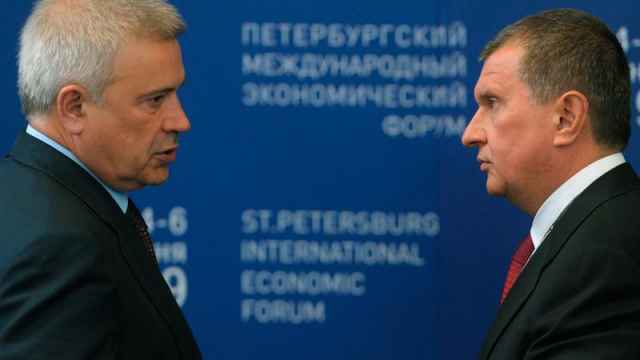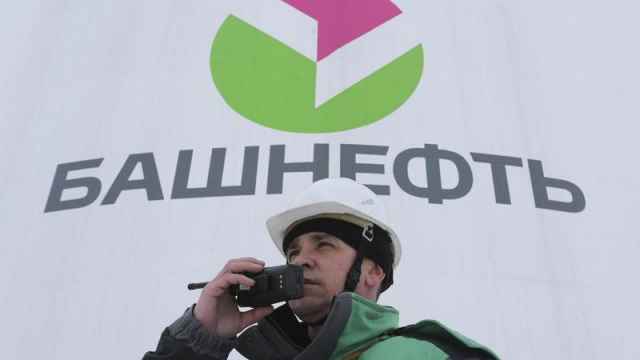State-owned energy giant Rosneft will be able to take part in the privatization of Bashneft, Russia's First Deputy Prime Minister Igor Shuvalov has announced.
Rosneft's participation in the deal has been the subject of fierce debate in Russia. Although the company is not directly controlled by the Kremlin, the Russian state owns a 50.8 percent stake in the firm through its parent company, Rosneftegaz.
Both presidential aide Andrei Belousov and Deputy Prime Minister Arkady Dvorkovich have opposed the idea, with Belousov even labeling the idea “absurd.”
Prime Minister Dmitry Medvedev even agreed to postpone the prizatization because he and President Vladimir Putin could not decide on whether to grant Rosneft access to the deal. One government official said that Rosneft CEO Igor Sechin had “put a lot of pressure” on the government to grant him the permission he needed.
A turning point came when President Putin told Bloomberg that the Russian budget depended on selling Bashneft to the highest bidder- and that the state should not discriminate against any market participant.
One senior official revealed that Rosneft had promised to outbid its competitors, but declined to reveal the exact amount of the bid. The government has already given the 50.08 percent stake a preliminary value of from 297 billion ($4.7 billion) to 315 billion rubles ($5 billion).
Sechin has justified Rosneft's bid by claiming that the company will experience “significant synergy” — adding up to 160 billion rubles to the value of the company — by buying the Bashneft stake.
This is significant due to the 19.5 percent stake which the Russian government holds in Rosneft— although the Kremlin has planned to sell the shares for some time. Under Sechin's proposed scheme, Rosneft would first purchase Bashneft for a higher price than other bidders, thereby putting more money into the government coffers and raising the Rosneft's value. Only then would the government sell its 19.5 percent stake in Rosneft.
The Finance Ministry has budgeted 382 billion rubles ($6.1 billion) in privatization revenues in 2016, factoring in the sale of diamond company Alrosa as well as Bashneft. Yet the privatization of the Rosneft stake at this higher price could generate as much as an additional $11 billion of revenue.
Senior Rosneft managers stand to benefit from the plan as well. According to the Rosneft website, CEO Igor Sechin owns a 0.1273 percent share in the company, Deputy Chairman of the Board Matthias Warnig holds 0.0009 percent, Independent Director Donald Humphreys owns 0.0021 percent, and Management Board members Yury Kalinin, Didier Casimiro, Peter Lazarev, Eric Lion, Yury Narushevich, Zeljko Runje, and Andrei Shishkin own 0.0019 percent, 0.0043 percent, 0.0042 percent, 0.0051 percent, 0.00006 percent, 0.0036 percent, and 0.0036 percent respectively.
Yet the plan also has potential sticking points. Rosneft currently has a great deal of liquidity, but some are already concerned about where the money to buy the Bashneft stake will come from. “There should definitely be no state money in any form used in the deal,” one senior official warned.
A Message from The Moscow Times:
Dear readers,
We are facing unprecedented challenges. Russia's Prosecutor General's Office has designated The Moscow Times as an "undesirable" organization, criminalizing our work and putting our staff at risk of prosecution. This follows our earlier unjust labeling as a "foreign agent."
These actions are direct attempts to silence independent journalism in Russia. The authorities claim our work "discredits the decisions of the Russian leadership." We see things differently: we strive to provide accurate, unbiased reporting on Russia.
We, the journalists of The Moscow Times, refuse to be silenced. But to continue our work, we need your help.
Your support, no matter how small, makes a world of difference. If you can, please support us monthly starting from just $2. It's quick to set up, and every contribution makes a significant impact.
By supporting The Moscow Times, you're defending open, independent journalism in the face of repression. Thank you for standing with us.
Remind me later.






